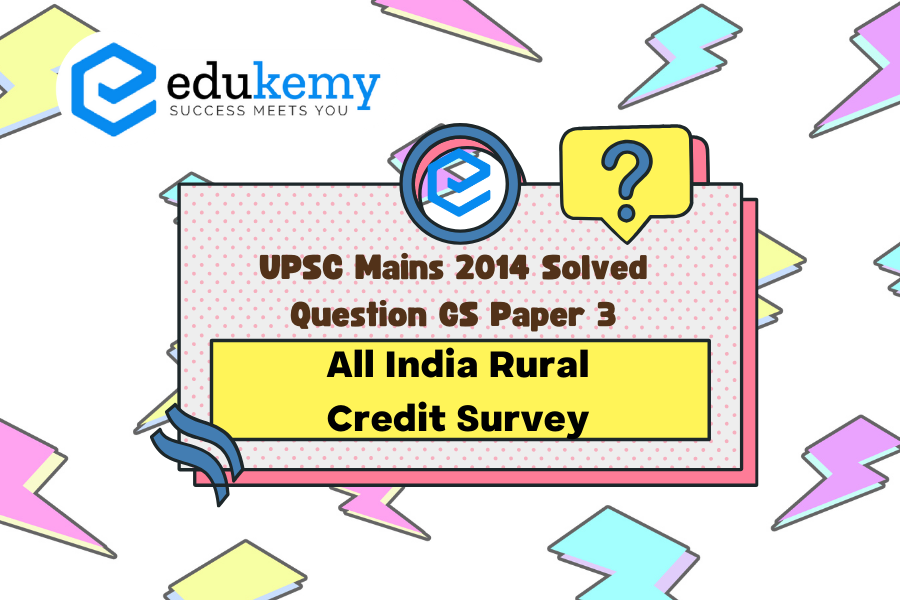The assertion made by the All India Rural Credit Survey that “In the villages itself no form of credit organization will be suitable except the cooperative society” underscores the pivotal role of cooperative societies in addressing the credit needs of rural India. Historically, agriculture in India has heavily relied on informal credit sources due to the lack of access to formal financial institutions. However, cooperative societies provide a structured framework for rural credit delivery, fostering financial inclusion and community empowerment. Despite their potential, financial institutions face numerous constraints in supplying agricultural finance, including inadequate infrastructure, low financial literacy, and high transaction costs. Leveraging technology offers promising solutions to overcome these challenges by facilitating digital banking services, mobile payments, and remote agricultural advisories. By embracing technological innovations, financial institutions can enhance efficiency, expand outreach, and tailor services to meet the diverse needs of rural clients, thereby bolstering agricultural development and rural livelihoods.
Tag: e-technology in the aid of farmers.
Contents
Decoding the Question:
- In the introduction, write about agricultural finance.
- In Body,
- Mention about cooperative society and their role in agri financing.
- Constraints and Challenges faced by financial institutions in agriculture financing.
- Role of technology in improving agriculture financing.
- Conclude with the importance of agriculture financing.
Answer:
For the development of any sector finance is a prerequisite and agriculture also not the exception for it. There is also a key factor in the availability of this agriculture credit or finance is key. However, the challenges in accessing finance have hampered the growth of this sector specifically.
Cooperative societies have the objective of providing cheap credit to the farmers in order to relieve them from the clutches of money lenders. The significance of agri-finance through cooperative societies:
- to promote the economic interests of the members in accordance with the co-operative principles;
- to provide short and medium term loans;
- to promote savings habit among members;
The existing financial infrastructure in India has not been able to meet the key financial needs that arise along agricultural value chains and consequently:
- Many Agri intermediaries as well as farmers are either left un-served or underserved due to the lack of timely access to institutional finance via Agri-loans.
- The market demand for smallholder agriculture finance is huge and is largely unmet.
- Without access to credit, most smallholders are restricted to farming, trading, processing practices that result in low levels of productivity.
- Although various financial institutions have come up and have set up shops in rural India, the majority of Agri stakeholders still have limited or no access to them.
Constraints and challenges faced by the financial institution engaged in agriculture:
- Inadequate financial base: In India the financial base of farmers and banks has not been that strong which can sustain agricultural finance and repayment of loans.
- Erratic monsoon: Erratic monsoon sometimes leads to the failure of crops. This failure of crops leads to indebtedness and also failure of crops leads to increasing NPA.
- Issue of accessibility: Many farmers in India still do not get adequate financial help but many farmers do not get a loan due to the issue of compliance with documents.
- Small land holding: Due to small landholding and a large number of small and marginal farmers is leading to less productivity, less income and erratic weather changes lead to loss to everyone. Therefore, access to financial resources is becoming dry.
But technology can be transformative to increase access to financial institutions. Technologies such as:
- JAM trinity: Jandhan, Aadhaar, and Mobile these days are playing a very important role in increasing the reach of the financial institutions and improving availability of financial services to rural clients.
- Small payments bank: Small payments bank is another tool which can be used to increase banking services through thor mobile apps, small mobile banking facilities etc.
- UPI and BHIM: Unified Payment Interface and Bharat Interface for Money, both are providing very vital payment gateways for all types of financial transactions. Both digital payments systems proved a thrust to acceptance to digital payment systems.
- Fintech Companies: In India digital payments system is deepening its roots with increasing digital payments companies and few telecom companies are providing payment services such as Airtel and Jio. This also helped rural communities to get access to financial services.
Although digital India programmers have improved access to financial services but larger and deepening credit accessibility India needs cooperative credit societies also. India has better democratic control, fulfilling instant financial needs, and access to organized commercial banking systems for satisfying needs for various purposes can be achieved.
In case you still have your doubts, contact us on 9811333901.
For UPSC Prelims Resources, Click here
For Daily Updates and Study Material:
Join our Telegram Channel – Edukemy for IAS
- 1. Learn through Videos – here
- 2. Be Exam Ready by Practicing Daily MCQs – here
- 3. Daily Newsletter – Get all your Current Affairs Covered – here
- 4. Mains Answer Writing Practice – here


